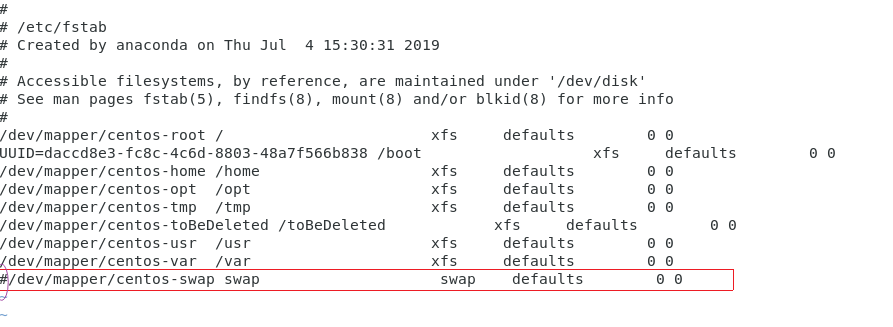1.前言
本文共分为openGauss单机版安装部分和连接环境搭建部分,提供了通过go语言来连接openGauss的一种方案。openGauss现在也有了基于go的驱动,但是我觉得ODBC的方式更为通用一些,也不应被丢弃,因此本文使用go通过ODBC来连接openGauss。
硬件及软件环境:
硬件环境:虚拟机的内存8GB,4核心CPU,900G磁盘(非必须)
软件环境:CentOS7.6
数据库版本:opengauss2.0企业版:openGauss-2.0.0-CentOS-64bit-all.tar.gz
2.openGauss单机版安装:
2.1. 关闭防火墙
#停止firewallsystemctl stop firewalld.service #禁止firewall开机启动 systemctl disable firewalld.service #检查防火墙是否关闭。 systemctl status firewalld复制
说明:
若防火墙状态显示为active (running),则表示防火墙未关闭。
若防火墙状态显示为inactive (dead),则无需再关闭防火墙。
2.2. 设置时区和时间
将各数据库节点的时区设置为相同时区,可以将/usr/share/zoneinfo/目录下的时区文件拷贝为/etc/localtime文件。
cp /usr/share/zoneinfo/Asia/Shanghai /etc/localtime
2.3. 关闭SELinux
[root@node1 ~]#
getenforce sed -i 's/^SELINUX=.*/SELINUX=disabled/' /etc/selinux/config setenforce 0 getenforce #检查 cat /etc/selinux/config|grep SELINUX复制
输出:
# SELINUX= can take one of these three values:
SELINUX=disabled
# SELINUXTYPE= can take one of three values:
SELINUXTYPE=targeted
[root@node1 ~]#
2.4. 修改/etc/hosts
#添加一行
cat >>/etc/hosts <<EOF 192.168.183.28 node1 EOF复制
2.5. 配置库路径
cat>> /etc/profile<<EOF export LD_LIBRARY_PATH=/opt/software/openGauss/script/gspylib/clib:$LD_LIBRARY_PATH EOF复制
2.6. 关闭os交换区
编辑/etc/fstab文件,将交换区的那一行注释掉
vi /etc/fstab

:wq保存退出vi
临时关闭交换区命令:
swapoff -a free复制
2.7. 设置root用户远程登陆
sed -i "s/#Banner none/Banner none/g" /etc/ssh/sshd_config cat >>/etc/ssh/sshd_config<<EOF PermitRootLogin yes EOF systemctl restart sshd #检查 cat /etc/ssh/sshd_config | grep PermitRootLogin cat /etc/ssh/sshd_config | grep Banner复制
如下显示修改正确:
PermitRootLogin yes
Banner none
2.8. 文件系统参数、系统支持的最大进程数
echo "* soft nofile 1000000" >>/etc/security/limits.conf echo "* hard nofile 1000000" >>/etc/security/limits.conf echo "* soft nproc unlimited" >>/etc/security/limits.conf echo "* hard nproc unlimited" >>/etc/security/limits.conf复制
2.9. 安装python3.6.x
yum install openssl* -y yum install python3* -y复制
检查
[omm@node1 dn]$ python3 -V复制
Python 3.6.8
其他软件包,如需要可以安装(也可以直接使用安装):
yum install -y libaio-devel flex bison ncurses-devel glibc-devel patch redhat-lsb-core readline-devel yum install openssl* -y yum install -y java-1.8.0-openjdk* psmisc bzip2 python3 python3-devel lksctp* reboot #重新启动服务器复制
2.10. 创建安装包的存放目录
mkdir -p /opt/software/openGauss chmod 755 -R /opt/software复制
2.11. 下载openGauss数据库软件
下载地址为:https://opengauss.org/zh/download.html
下载完成后上传到centos中。
2.12. 解压缩openGauss DBMS介质
cd /opt/software/openGauss tar -zxvf openGauss-2.0.0-CentOS-64bit-all.tar.gz tar -zxvf openGauss-2.0.0-CentOS-64bit-om.tar.gz复制
2.13. 创建XML文件
cat > clusterconfig.xml<<EOF <?xml version="1.0" encoding="UTF-8"?> <ROOT> <!-- openGauss整体信息 --> <CLUSTER> <!-- 数据库名称 --> <PARAM name="clusterName" value="dbCluster" /> <!-- 数据库节点名称(hostname) --> <PARAM name="nodeNames" value="node1" /> <!-- 数据库安装目录--> <PARAM name="gaussdbAppPath" value="/opt/huawei/install/app" /> <!-- 日志目录--> <PARAM name="gaussdbLogPath" value="/var/log/omm" /> <!-- 临时文件目录--> <PARAM name="tmpMppdbPath" value="/opt/huawei/tmp" /> <!-- 数据库工具目录--> <PARAM name="gaussdbToolPath" value="/opt/huawei/install/om" /> <!-- 数据库core文件目录--> <PARAM name="corePath" value="/opt/huawei/corefile" /> <!-- 节点IP,与数据库节点名称列表一一对应 --> <PARAM name="backIp1s" value="192.168.183.28"/> </CLUSTER> <!-- 每台服务器上的节点部署信息 --> <DEVICELIST> <!-- 节点1上的部署信息 --> <DEVICE sn="node1"> <!-- 节点1的主机名称 --> <PARAM name="name" value="node1"/> <!-- 节点1所在的AZ及AZ优先级 --> <PARAM name="azName" value="AZ1"/> <PARAM name="azPriority" value="1"/> <!-- 节点1的IP,如果服务器只有一个网卡可用,将backIP1和sshIP1配置成同一个IP --> <PARAM name="backIp1" value="192.168.183.28"/> <PARAM name="sshIp1" value="192.168.183.28"/> <!--dbnode--> <PARAM name="dataNum" value="1"/> <PARAM name="dataPortBase" value="26000"/> <PARAM name="dataNode1" value="/opt/huawei/install/data/dn"/> <PARAM name="dataNode1_syncNum" value="0"/> </DEVICE> </DEVICELIST> </ROOT> EOF复制
2.14. 检查环境变量
echo $LD_LIBRARY_PATH复制


2.15. 安装前进行交互式检查
[root@node1 script]# ./gs_preinstall -U omm -G dbgrp -X /opt/software/openGauss/clusterconfig.xml复制
出现以下内容代表检查没问题。
Successfully parsed the configuration file. Installing the tools on the local node. Successfully installed the tools on the local node. Setting pssh path Successfully set core path. Are you sure you want to create the user[omm] and create trust for it (yes/no)? yes Please enter password for cluster user. Password: omm123 Please enter password for cluster user again. Password: omm123 Successfully created [omm] user on all nodes. Preparing SSH service. Successfully prepared SSH service. Checking OS software. Successfully check os software. Checking OS version. Successfully checked OS version. Creating cluster's path. Successfully created cluster's path. Setting SCTP service. Successfully set SCTP service. Set and check OS parameter. Setting OS parameters. Successfully set OS parameters. Warning: Installation environment contains some warning messages. Please get more details by "/opt/software/openGauss/script/gs_checkos -i A -h node1 --detail". Set and check OS parameter completed. Preparing CRON service. Successfully prepared CRON service. Setting user environmental variables. Successfully set user environmental variables. Setting the dynamic link library. Successfully set the dynamic link library. Setting Core file Successfully set core path. Setting pssh path Successfully set pssh path. Set ARM Optimization. No need to set ARM Optimization. Fixing server package owner. Setting finish flag. Successfully set finish flag. Preinstallation succeeded复制
2.16. 开始安装openGauss DBMS和创建数据库
使用root执行如下命令
cd /opt/software/openGauss/script chmod -R 755 /opt/software/openGauss/script chown -R omm:dbgrp /opt/software/openGauss/script复制
使用omm用户安装openGauss DBMS和创建openGauss数据库
su - omm cd /opt/software/openGauss/script cp ../clusterconfig.xml . gs_install -X /opt/software/openGauss/script/clusterconfig.xml复制
重要提示:用户需根据提示输入数据库的密码,密码需要具有一定的复杂度,为保证用户正常使用该数据库,请记住输入的数据库密码。此处建议密码设置为huawei@1234
[omm@node1 ~]$ cd /opt/software/openGauss/script [omm@node1 script]$ cp ../clusterconfig.xml . [omm@node1 script]$ gs_install -X /opt/software/openGauss/script/clusterconfig.xml复制
Parsing the configuration file. Check preinstall on every node. Successfully checked preinstall on every node. Creating the backup directory. Successfully created the backup directory. begin deploy.. Installing the cluster. begin prepare Install Cluster.. Checking the installation environment on all nodes. begin install Cluster.. Installing applications on all nodes. Successfully installed APP. begin init Instance.. encrypt cipher and rand files for database. Please enter password for database:huawei@1234 Please repeat for database:huawei@1234 begin to create CA cert files The sslcert will be generated in /opt/huawei/install/app/share/sslcert/om Cluster installation is completed. Configuring. Deleting instances from all nodes. Successfully deleted instances from all nodes. Checking node configuration on all nodes. Initializing instances on all nodes. Updating instance configuration on all nodes. Check consistence of memCheck and coresCheck on database nodes. Configuring pg_hba on all nodes. Configuration is completed. Successfully started cluster. Successfully installed application. end deploy..复制
查看数据库状态:
[omm@node1 script]$ gs_om -t status复制
会出现以下内容:
cluster_name : dbCluster cluster_state : Normal redistributing : No --------------------------------------------------------------------- [omm@node1 script]$复制
启动数据库(安装完默认已经启动):
[omm@node1 db1]$ gs_om -t start复制
Starting cluster.
=========================================
[SUCCESS] node1:
[2021-04-01 16:50:13.969][29784][][gs_ctl]: gs_ctl started,datadir is /opt/huawei/install/data/dn
[2021-04-01 16:50:13.974][29784][][gs_ctl]: another server might be running; Please use the restart command
=========================================
Successfully started.
使用omm用户执行下面的操作。
登录到数据库,
gsql -d postgres -p 26000 -r复制
#执行上条命令会出现以下提示内容。gsql ((openGauss 2.0.0 build 78689da9) compiled at 2021-03-31 21:04:03 commit 0 last mr ) Non-SSL connection (SSL connection is recommended when requiring high-security) Type "help" for help.复制
其他常见的基本命令
\q #退出会话 gs_om -t stop #关闭数据库 gs_om -t restart #重启数据库复制
更多操作使用说明见官方文档:https://opengauss.org/zh/docs/2.1.0/docs/Quickstart/Quickstart.html
3. 连接环境搭建
3.1 安装go语言环境
安装go语言,安装包下载地址:https://dl.google.com/go/go1.17.5.linux-amd64.tar.gz
上传压缩包后解压: tar -C /usr/local/ -xvf go1.11.4.linux-amd64.tar.gz
配置环境变量
vi /etc/profile复制追加以下内容:
export PATH=$PATH:/usr/local/go/bin复制让环境变量配置生效:
source /etc/profile复制验证go是否安装成功:
go version复制出现以下内容代表安装成功(我装的是1.16版本,以你下载的安装包版本为准):

3.2 搭建unixODBC环境
yum install unixODBC
yum install unixODBC-devel #非必须复制下载openGauss ODBC驱动ODBC_2.1.0:https://opengauss.org/zh/download.html
下载之后上传到centos机器上/soft路径(该路径不是必须) ,把驱动拷贝到指定目录下:
cd /soft
tar -xzvf openGauss-2.1.0-ODBC.tar.gz
cp lib/* /usr/local/libcp odbc/lib/* /usr/local/lib复制安装完unixODBC后,/etc目录下会有一个文件: odbcinst.ini ,接下来配置这个文件
vim odbcinst.ini
将下列内容添加进去:
[openGauss]
Driver64=/usr/local/lib/psqlodbcw.so
setup=/usr/local/lib/psqlodbcw.so
复制另外在/etc下编辑odbc.ini(如没有则新建):
vim /etc/odbc.ini
将下列内容拷贝进去:
[openGaussODBC]
Driver=openGauss
Servername=192.168.183.28
Database=postgres
Username=gem
Password=huawei@1234
Port=26000
DatabaseName=postgres
复制注,上面要填自己的IP,数据库用户名和口令,且不能是omm初始用户。
到此配置基本完成了,下面验证odbc是否可以openGauss(数据库要开启):
isql -v openGaussODBC复制若出现以下内容代表配置ok,连接没有问题:

3.3 编写go语言通过ODBC连接openGauss的测试脚本并执行验证
package main
import (
"database/sql"
"fmt"
_ "odbc/driver"
)
func main() {
fmt.Printf("%s\n", "创建数据库链接")
conn, err := sql.Open("odbc","DSN=openGaussODBC;UID=gem;PWD=huawei@1234")
if err != nil {
fmt.Println("链接错误")
return
}
defer conn.Close()
fmt.Printf("%s\n", "构建查询")
stmt, err := conn.Prepare("select 666;")
if err != nil {
fmt.Println("查询异常:", err)
return
}
defer stmt.Close()
row, err := stmt.Query()
if err != nil {
fmt.Println("查询错误:", err)
}
defer row.Close()
fmt.Printf("%s\n", "数据集显示")
for row.Next() {
var id int
if err := row.Scan(&id); err == nil {
fmt.Println(id)
}
复制在脚本路径下执行测试:
go run test_gauss.go复制
4.总结
个人认为,比较容易出错的点是,虚拟机内存要大于等于8GB,unixODBC两个配置文件odbc.ini和odbcinst.ini的配置稍麻烦,最后,数据库一定要start才能连接成功,个人有一次犯了一次这个错误,虽然是很浅显的道理哈哈。






